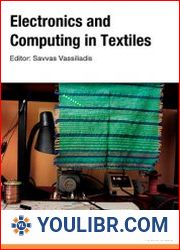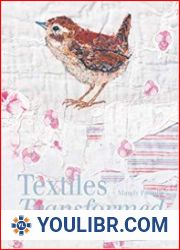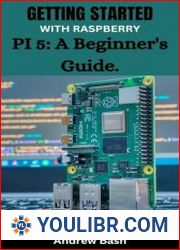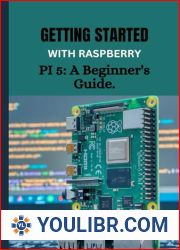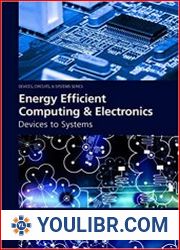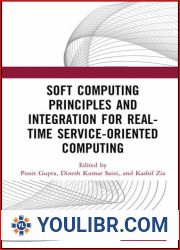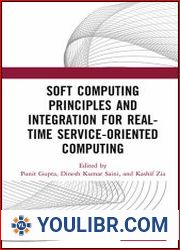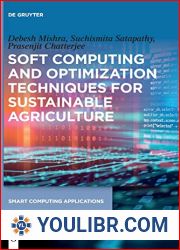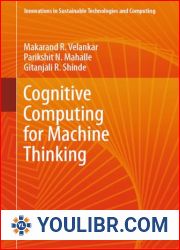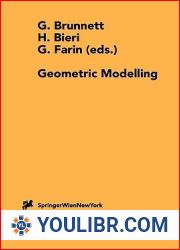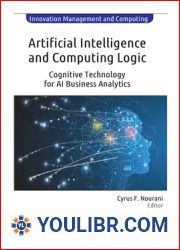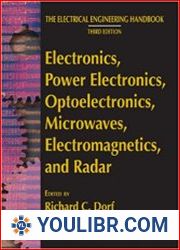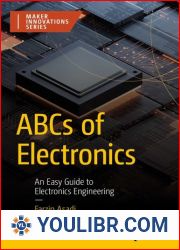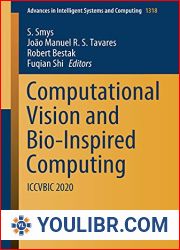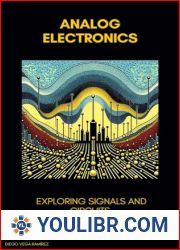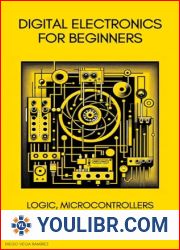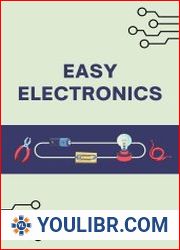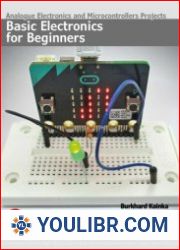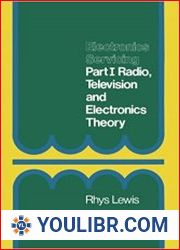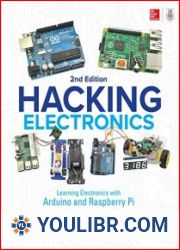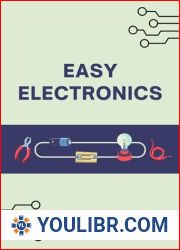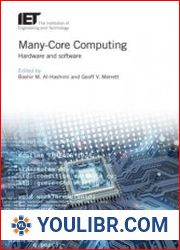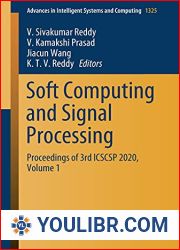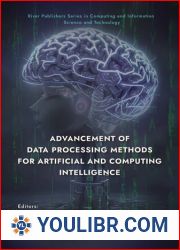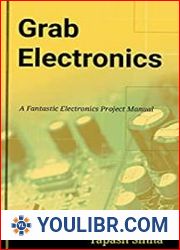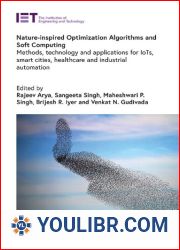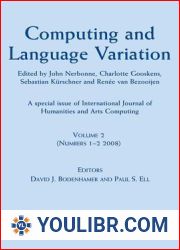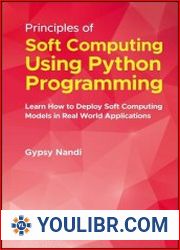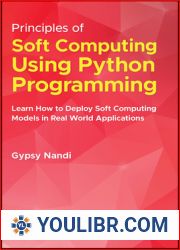
BOOKS - TECHNICAL SCIENCES - Electronics and Computing in Textiles

Electronics and Computing in Textiles
Author: Savvas Vassiliadis
Year: 2012
Format: PDF
File size: 11,6 MB
Language: ENG

Year: 2012
Format: PDF
File size: 11,6 MB
Language: ENG

It provides students with a comprehensive understanding of the principles and applications of electronics and computing in textiles. The book covers topics such as electronic properties of textile fibers, smart textiles, sensors, and communication systems. The book begins by discussing the historical background of electronics and computing in textiles, highlighting the key milestones and breakthroughs that have shaped the field. It then delves into the fundamental principles of electronics and computing, explaining how these concepts apply to textiles. The authors emphasize the importance of understanding the underlying physics and chemistry of materials and processes to create innovative textile products. They also explore the various applications of electronics and computing in textiles, including intelligent fabrics, wearable technology, and e-textiles. Throughout the book, the authors use clear explanations and examples to help readers grasp complex concepts and ideas. The book's focus on practical applications makes it an excellent resource for students and professionals looking to apply their knowledge of electronics and computing in textiles to real-world problems. The text is written in an accessible style, making it easy for readers to understand even if they lack prior knowledge of the subject. The book concludes by discussing future trends and developments in electronics and computing in textiles, providing a comprehensive overview of the field and its potential for growth and innovation.
Он дает студентам полное понимание принципов и применений электроники и вычислений в текстиле. Книга охватывает такие темы, как электронные свойства текстильных волокон, умный текстиль, датчики и системы связи. Книга начинается с обсуждения исторических предпосылок электроники и вычислений в текстиле, выделяя ключевые вехи и прорывы, которые сформировали эту область. Затем он углубляется в фундаментальные принципы электроники и вычислений, объясняя, как эти понятия применимы к текстилю. Авторы подчеркивают важность понимания лежащей в основе физики и химии материалов и процессов для создания инновационных текстильных изделий. Они также изучают различные области применения электроники и вычислительной техники в текстиле, включая интеллектуальные ткани, носимые технологии и электронный текстиль. На протяжении всей книги авторы используют четкие объяснения и примеры, чтобы помочь читателям понять сложные концепции и идеи. Ориентация книги на практическое применение делает ее отличным ресурсом для студентов и специалистов, желающих применить свои знания в области электроники и вычислительной техники в текстиле для решения реальных задач. Текст написан в доступном стиле, что облегчает читателям понимание, даже если им не хватает предварительных знаний предмета. Книга завершается обсуждением будущих тенденций и разработок в области электроники и вычислительной техники в текстиле, предоставляя всесторонний обзор этой области и ее потенциала для роста и инноваций.
Il donne aux étudiants une compréhension complète des principes et des applications de l'électronique et de l'informatique dans le textile. livre couvre des sujets tels que les propriétés électroniques des fibres textiles, les textiles intelligents, les capteurs et les systèmes de communication. livre commence par une discussion sur les prémisses historiques de l'électronique et de l'informatique dans le textile, soulignant les étapes clés et les percées qui ont façonné ce domaine. Il se penche ensuite sur les principes fondamentaux de l'électronique et de l'informatique, expliquant comment ces concepts s'appliquent au textile. s auteurs soulignent l'importance de comprendre la physique et la chimie sous-jacentes des matériaux et des processus pour créer des produits textiles innovants. Ils étudient également divers domaines d'application de l'électronique et de l'informatique dans le textile, y compris les tissus intelligents, les technologies portatives et les textiles électroniques. Tout au long du livre, les auteurs utilisent des explications et des exemples clairs pour aider les lecteurs à comprendre des concepts et des idées complexes. L'orientation du livre vers une application pratique en fait une excellente ressource pour les étudiants et les professionnels désireux d'appliquer leurs connaissances en électronique et en informatique dans le textile pour relever des défis réels. texte est écrit dans un style accessible, ce qui facilite la compréhension des lecteurs, même s'ils manquent de connaissance préalable du sujet. livre conclut en discutant des tendances et des développements futurs dans le domaine de l'électronique et de l'informatique dans le textile, en fournissant un aperçu complet de ce domaine et de son potentiel de croissance et d'innovation.
Da a los estudiantes una comprensión completa de los principios y aplicaciones de la electrónica y la computación en los textiles. libro abarca temas como las propiedades electrónicas de las fibras textiles, textiles inteligentes, sensores y sistemas de comunicación. libro comienza discutiendo las premisas históricas de la electrónica y la computación en los textiles, destacando los hitos y avances clave que han dado forma a este campo. Luego profundiza en los principios fundamentales de la electrónica y la computación, explicando cómo estos conceptos son aplicables al textil. autores subrayan la importancia de comprender la física subyacente y la química de los materiales y procesos para crear productos textiles innovadores. También estudian diferentes campos de aplicación de la electrónica y la informática en textiles, incluyendo tejidos inteligentes, tecnologías wearables y textiles electrónicos. A lo largo del libro, los autores utilizan explicaciones y ejemplos claros para ayudar a los lectores a comprender conceptos e ideas complejas. La orientación del libro hacia aplicaciones prácticas lo convierte en un gran recurso para estudiantes y profesionales que desean aplicar sus conocimientos en electrónica y computación en textiles para resolver problemas reales. texto está escrito en un estilo accesible, lo que facilita la comprensión de los lectores, aunque carezcan de conocimientos previos del tema. libro concluye con un debate sobre las tendencias y desarrollos futuros en el campo de la electrónica y la informática textil, ofreciendo una visión global de esta área y su potencial de crecimiento e innovación.
Ele dá aos estudantes uma compreensão completa dos princípios e aplicações da eletrónica e computação em têxteis. O livro abrange temas como as propriedades eletrônicas das fibras têxteis, têxteis inteligentes, sensores e sistemas de comunicação. O livro começa com uma discussão sobre as premissas históricas de eletrônicos e computação em têxteis, destacando os eixos e avanços que formaram esta área. Depois, aprofundou-se nos princípios fundamentais da eletrónica e computação, explicando como esses conceitos se aplicam ao têxtil. Os autores destacam a importância de compreender a física e a química subjacentes para a criação de produtos têxteis inovadores. Eles também estudam várias aplicações de eletrônicos e computação em têxteis, incluindo tecidos inteligentes, tecnologia portável e têxteis eletrônicos. Ao longo do livro, os autores usam explicações e exemplos claros para ajudar os leitores a compreender conceitos e ideias complexas. A orientação do livro para aplicações práticas torna-o um excelente recurso para estudantes e especialistas que desejam aplicar seus conhecimentos de eletrônica e computação em têxteis para tarefas reais. O texto é escrito em um estilo acessível, o que facilita a compreensão dos leitores, mesmo que eles não tenham conhecimento prévio da matéria. O livro termina com um debate sobre as futuras tendências e desenvolvimentos eletrônicos e computacionais em têxteis, fornecendo uma visão abrangente desta área e seu potencial de crescimento e inovação.
Offre agli studenti una piena comprensione dei principi e delle applicazioni dell'elettronica e del calcolo nel tessile. Il libro comprende temi come le proprietà elettroniche delle fibre tessili, tessili intelligenti, sensori e sistemi di comunicazione. Il libro inizia discutendo i presupposti storici dell'elettronica e del calcolo del tessile, evidenziando le fasi cardine e le tappe che hanno formato l'area. Poi si approfondisce nei principi fondamentali dell'elettronica e del calcolo, spiegando come questi concetti sono applicabili al tessile. Gli autori sottolineano l'importanza della comprensione della fisica e della chimica dei materiali e dei processi per la creazione di prodotti tessili innovativi. Essi studiano anche diverse applicazioni dell'elettronica e dell'informatica nel tessile, tra cui tessuti intelligenti, tecnologie indossabili e tessili elettronici. Durante tutto il libro, gli autori utilizzano spiegazioni e esempi chiari per aiutare i lettori a comprendere concetti e idee complesse. L'orientamento del libro verso l'applicazione pratica lo rende una risorsa eccellente per studenti e professionisti che desiderano utilizzare le proprie conoscenze elettroniche e informatiche nel tessile per affrontare le sfide reali. Il testo è scritto in uno stile accessibile, che rende più facile per i lettori comprendere, anche se non hanno la conoscenza preliminare della materia. Il libro si conclude con un dibattito sulle future tendenze e sviluppi dell'elettronica e dell'informatica nel tessile, fornendo una panoramica completa di questo settore e del suo potenziale di crescita e innovazione.
Es vermittelt den Studierenden ein umfassendes Verständnis der Prinzipien und Anwendungen von Elektronik und Computing in Textilien. Das Buch behandelt Themen wie elektronische Eigenschaften von Textilfasern, intelligente Textilien, Sensoren und Kommunikationssysteme. Das Buch beginnt mit einer Diskussion der historischen Hintergründe von Elektronik und Computing in Textilien und hebt die wichtigsten Meilensteine und Durchbrüche hervor, die dieses Feld geprägt haben. Anschließend geht er tiefer in die grundlegenden Prinzipien der Elektronik und des Computing ein und erklärt, wie diese Konzepte auf Textilien anwendbar sind. Die Autoren betonen, wie wichtig es ist, die zugrunde liegende Physik und Chemie von Materialien und Prozessen zu verstehen, um innovative Textilien zu schaffen. e untersuchen auch verschiedene Anwendungen für Elektronik und Computertechnik in Textilien, einschließlich intelligenter Stoffe, tragbarer Technologien und elektronischer Textilien. Während des gesamten Buches verwenden die Autoren klare Erklärungen und Beispiele, um den sern zu helfen, komplexe Konzepte und Ideen zu verstehen. Die Ausrichtung des Buches auf die praktische Anwendung macht es zu einer hervorragenden Ressource für Studenten und Fachleute, die ihr Wissen über Elektronik und Computertechnik in Textilien anwenden möchten, um reale Probleme zu lösen. Der Text ist in einem zugänglichen Stil geschrieben, der es den sern erleichtert, ihn zu verstehen, auch wenn ihnen Vorkenntnisse zum Thema fehlen. Das Buch schließt mit einer Diskussion über zukünftige Trends und Entwicklungen in der Elektronik und Computertechnik in Textilien und bietet einen umfassenden Überblick über diesen Bereich und sein Potenzial für Wachstum und Innovation.
''
Öğrencilere tekstilde elektronik ve bilgisayar ilkeleri ve uygulamaları hakkında tam bir anlayış kazandırır. Kitap, tekstil liflerinin elektronik özellikleri, akıllı tekstiller, sensörler ve iletişim sistemleri gibi konuları kapsamaktadır. Kitap, tekstilde elektronik ve bilişimin tarihsel öncüllerini tartışarak, alanı şekillendiren önemli kilometre taşlarını ve atılımları vurgulayarak başlıyor. Daha sonra elektronik ve bilişimin temel ilkelerini inceleyerek bu kavramların tekstillere nasıl uygulandığını açıklıyor. Yazarlar, yenilikçi tekstiller oluşturmak için malzemelerin ve süreçlerin altında yatan fizik ve kimyayı anlamanın önemini vurgulamaktadır. Ayrıca, akıllı kumaşlar, giyilebilir teknoloji ve elektronik tekstiller de dahil olmak üzere tekstildeki çeşitli elektronik ve bilgisayar uygulamalarını araştırıyorlar. Kitap boyunca yazarlar, okuyucuların karmaşık kavram ve fikirleri anlamalarına yardımcı olmak için açık açıklamalar ve örnekler kullanırlar. Kitabın pratik uygulamaya odaklanması, gerçek sorunları çözmek için elektronik ve bilgisayar teknolojisi alanındaki bilgilerini tekstilde uygulamak isteyen öğrenciler ve uzmanlar için mükemmel bir kaynak haline getirmektedir. Metin, konu hakkında önceden bilgi sahibi olmasalar bile okuyucuların anlamasını kolaylaştıran erişilebilir bir tarzda yazılmıştır. Kitap, elektronik ve tekstildeki hesaplamada gelecekteki eğilimler ve gelişmeler hakkında bir tartışma ile sona eriyor ve alana ve büyüme ve yenilik potansiyeline kapsamlı bir genel bakış sunuyor.
يمنح الطلاب فهمًا كاملاً لمبادئ وتطبيقات الإلكترونيات والحوسبة في المنسوجات. يغطي الكتاب موضوعات مثل الخصائص الإلكترونية لألياف المنسوجات والمنسوجات الذكية وأجهزة الاستشعار وأنظمة الاتصالات. يبدأ الكتاب بمناقشة المباني التاريخية للإلكترونيات والحوسبة في المنسوجات، مع تسليط الضوء على المعالم الرئيسية والاختراقات التي شكلت المجال. ثم يتعمق في المبادئ الأساسية للإلكترونيات والحوسبة، موضحًا كيف تنطبق هذه المفاهيم على المنسوجات. يؤكد المؤلفون على أهمية فهم الفيزياء والكيمياء الأساسية للمواد والعمليات لإنشاء منسوجات مبتكرة. كما أنهم يستكشفون تطبيقات مختلفة للإلكترونيات والحوسبة في المنسوجات، بما في ذلك الأقمشة الذكية والتكنولوجيا القابلة للارتداء والمنسوجات الإلكترونية. في جميع أنحاء الكتاب، يستخدم المؤلفون تفسيرات وأمثلة واضحة لمساعدة القراء على فهم المفاهيم والأفكار المعقدة. تركيز الكتاب على التطبيق العملي يجعله مصدرًا ممتازًا للطلاب والمتخصصين الذين يرغبون في تطبيق معرفتهم في مجال الإلكترونيات وتكنولوجيا الكمبيوتر في المنسوجات لحل المشكلات الحقيقية. النص مكتوب بأسلوب يسهل الوصول إليه يسهل على القراء فهمه، حتى لو كانوا يفتقرون إلى المعرفة المسبقة بالموضوع. يختتم الكتاب بمناقشة الاتجاهات والتطورات المستقبلية في الإلكترونيات والحوسبة في المنسوجات، مما يوفر نظرة عامة شاملة على المجال وإمكاناته للنمو والابتكار.







